This travel wiki page on Japan will help travelers with quick and relevant information to consider when planning and visiting the country. It is difficult to find all the pertinent information you need on culture, safety, travel restrictions, and things to do, so we summarize it all here. If anything is stale or outdated, please let us know! Let us dive in and explore more high-level information as a Japan trip planner.
Posted October 24, 2022 – Last Updated June 8, 2024.
Table of contents
National Information & Culture
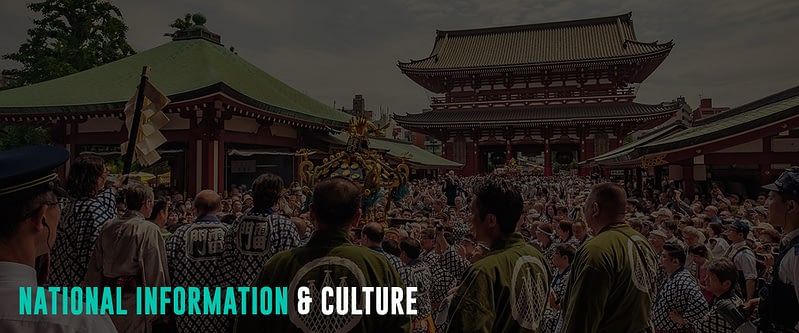
Japan, also known as the Land of the Rising Sun, is a highly developed Southeast Asian country. It comprises 6852 islands and is part of the Pacific Ring of Fire. Hokkaido, Honshu (the “mainland”), Shikoku, Kyushu, and Okinawa are the five main islands. Tokyo is the capital and largest city, followed by Yokohama, Osaka, Nagoya, Sapporo, Fukuoka, Kobe, and Kyoto. The Japanese Yen is the official currency.
Japan is a global leader in automotive, robotics, and electronics and significantly contributes to science and technology. As a member of the G7 countries, it also has great power in international politics. Aside from cars, the country’s most famous exports include sushi, ramen, anime, and manga.
Besides being a global economic and political leader, Japan is a popular tourist destination. The country has a dozen UNESCO World Heritage Sites and boasts natural and cultural attractions. In addition, Japan’s culture is famous around the world. Japan may appear exceedingly modern, but traveling the country allows visitors to connect with and immerse themselves in its traditional culture.
Japan has the world’s highest life expectancy at age 84, though it is experiencing a population decline. Japanese are also famous for being polite and punctual. In social and religious gatherings, they usually bow their heads as a sign of salutation, reverence, apology, or gratitude. Notably, a more profound and more prolonged bow indicates respect.
To learn more about Japan, consider checking their Official Tourism web page when planning your trip.
Special Travel Considerations

Each country and destination has rules and regulations that every traveler must consider. Hence, please consider the following factors for hassle-free travel to Japan.
Covid-19 Policy
As of April 29, 2023, Japan has lifted all the entry requirements related to the COVID-19 virus. Hence, all travelers to Japan do not need to show a vaccination certificate or negative test results. However, travelers who show symptoms will be tested upon arrival. Check the latest updates on Japan’s Covid-19 policies before your trip.
Travel Insurance
Travel insurance is not mandatory for travelers to Japan. However, all visitors are highly encouraged to get travel insurance that covers emergency medical expenses, repatriation, and evacuation. Travel insurance can protect you against the inconvenience of injury, medical emergencies, theft, and flight cancellations. In addition, it provides comprehensive protection in case anything goes wrong with your trip.
Visa Information

Nationals from 68 countries/regions have visa exemption to Japan and can stay from 14, 15, 30, and 90 days. Meanwhile, nationals of countries without visa exemption must apply for the necessary Japan visa. For the complete list of visa-exempt countries, including Japan’s foreign policy and consular services, visit the Ministry of Foreign Affairs web page or the nearest Embassy or Consular General office. In addition to a visa, all visitors must possess at least a 6-month valid passport to enter Japan.
Popular Attractions
Japan is a captivating blend of ancient traditions and cutting-edge technology. Its history dates back thousands of years, evident in the well-established Shinto and Buddhist temples. Here are some top tourist attractions you should explore:
Mount Fuji

Mount Fuji is among Japan’s timeless attractions and a favorite subject for artists and poets. Towering at 3,776 meters, Mount Fuji is an active stratovolcano and the highest peak in Japan. In 2013, UNESCO added it to the World Heritage List as a cultural site.
Whether visitors climb the sacred volcano or appreciate its beauty from afar, they will never tire of looking at this perfectly symmetrical cone. The holy mountain is part of the Fuji-Hakone-Isu National Park, and more than a million people climb it as a pilgrimage every summer. Reaching the summit and watching the sunrise from the peak brings a sense of achievement.
Tokyo

The modern culture of Japan is visible in Tokyo, the capital of Japan and the world’s most populous metropolis. Tokyo offers tradition, innovation, and unlimited opportunities to shop, eat, explore, and experience life in Japan. Additionally, Tokyo offers everything a shopaholic visitor needs, from the trendy shopping districts of Harajuku and Shibuya to the luxury stores in Ginza. Similarly, Shinjuku, the business district, has a mix of gleaming skyscrapers and streets. In the heart of downtown Tokyo, visitors will find Asakusa, which has ancient temples and traditional stores. Lastly, Tokyo is a foodie paradise with the most Michelin-starred restaurants in any other city worldwide and hundreds of cheap and delicious ramen shops.
Imperial Palace

The Imperial Palace occupies the site of the former Edo Castle and is currently the residence of Japan’s imperial family. Most of the palace complex is off-limits, but visitors can join one of the free tours offered by the Imperial Household Agency to see a small part of it.
A large park with moats and massive stone walls surrounds the palace. Its inner grounds are generally closed to the public, except on January 2 (New Year’s greetings) and February 23 (the emperor’s birthday), when members of the imperial family make several appearances on a balcony. Adjacent to the inner grounds of the palace is the Imperial Palace East Gardens, open to the public throughout the year, and anyone can enter without a guide.
Shibuya Crossing

Shibuya Crossing is famous as the busiest crossing in the world, with hundreds or thousands of people coming from different locations crossing simultaneously. The intersection is most impressive after dark on weekends, with neon lights over the crowd of people pouring out from the station.
Tokyo Skytree
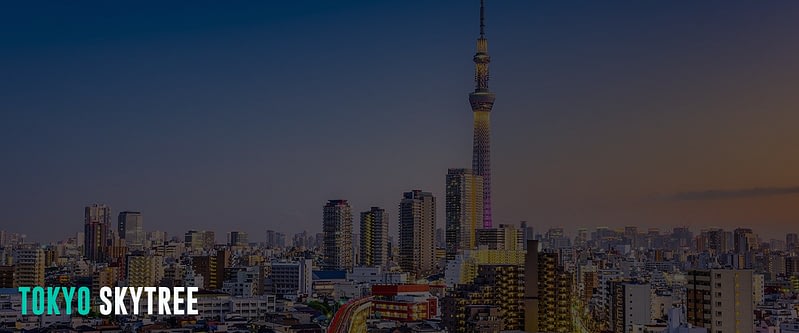
The 634-meter-high Tokyo Skytree towers over the capital’s skyline and gives visitors an incredible panoramic view of the city. If you are lucky, Skytree is one of the best spots to see Mt. Fuji from Tokyo on a clear day.
Tokyo National Museum

If you visit only one museum in Japan, head out to the Tokyo National Museum. It houses the largest Japanese art collections, including ancient pottery, Buddhist sculptures, samurai swords, colorful ukiyo-e (woodblock prints), and gorgeous kimonos. Various galleries highlight a specific era and source of the collections displayed that will bring you back to history. Its garden, including several vintage tea houses, is also worth visiting but only open to the public from mid-March to mid-April and late October to early December.
Sensoji Temple

Sensoji is Tokyo’s oldest temple, containing the sacred statue of Kannon, the Buddhist goddess of mercy. According to legend, two fishermen miraculously pulled the image out of the nearby Sumida River in AD 628. However, it remains a mystery if the ancient statue of Kannon exists, as it is not on public display.
The temple is a five-story pagoda with imposing gates and vibrant stalls of Nakamise Dori surrounding the complex. People visit here to burn incense in a large cauldron and bathe themselves in smoke, believing it will improve or heal their medical conditions.
Nearby the Sensoji temple is the Asakusa Shrine, built in honor of the fishermen who discovered the Kannon statue.
Kyoto
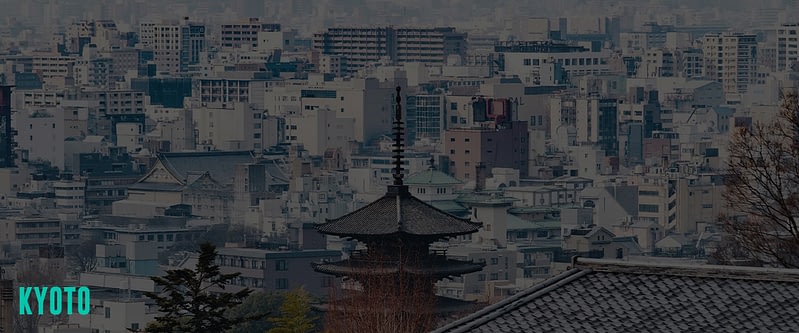
Travelers who want to experience the traditional Japanese must visit Kyoto, Japan’s cultural center and former capital city. Visitors will see and experience rural Japan’s refined culture, dining, and charm here. In addition, the historical city of Kyoto has various natural and cultural attractions that keep every visitor coming back.
Kiyomizudera Temple
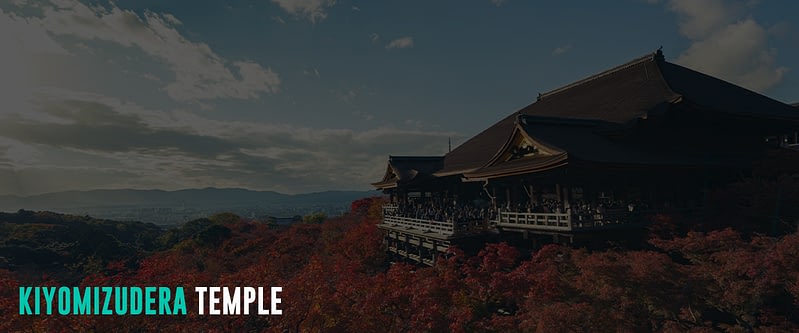
Kiyomizudera (Pure Water Temple) on the east side of Kyoto is one of Japan’s most popular and enjoyable temples. It is on top of a hill overlooking the city and represents the expression of faith in Japan. The temple is part of the Historic Monuments of Ancient Kyoto and is a UNESCO World Heritage Site.
In 778, the temple was constructed without using nails next to the Otowa Spring, flowing off the nearby hills. Visitors can catch and drink the water, believing it will bring them good health and longevity.
Visitors can explore the temple year-round, presenting unique views at every change of season. Cherry blossoms cover the hillsides during spring, lush green in summer, colorful leaves during autumn, and delicate trees in winter.
Kinkakuji / Golden Pavilion

Kinkakuji, or the Golden Pavilion, is a Zen temple in Northern Kyoto and one of the most popular sites in Japan. Brilliant gold leaf covers the temple’s main hall, shining above the reflecting pond. The place was a retirement villa for shogun Ashikaga Yoshimitsu, with the original building dating back to 1397. Unfortunately, Kinkakuji was burned down numerous times throughout its history, twice during the Onin War and more recently in 1950 when it was set on fire by a fanatic monk. The current structure is a result of rebuilding the temple in 1955.
Arashiyama Bamboo Forest
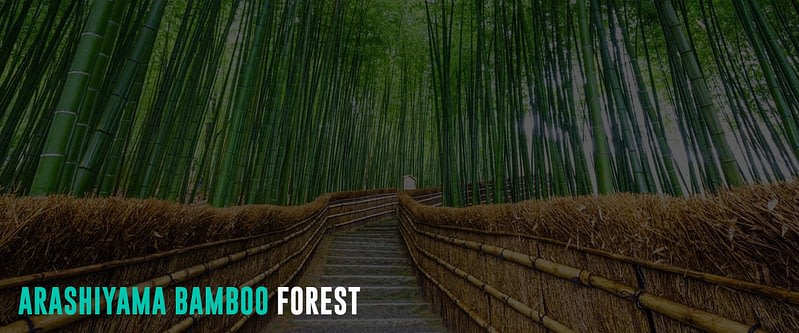
One of Kyoto’s most iconic sights is the Arashiyama Bamboo Forest. Visitors must try strolling the bamboo grove paths with sunlight filtering through the trees. The forest is most attractive when a light wind and the tall bamboo stalks sway gently back and forth. Exploring the attraction can be done on foot or by riding a rickshaw.
Another section of the forest leads visitors to the nearby Nonomiya Shrine, where yukata-clad young women come to pray for a love match.
Due to its natural setting, Arashiyama has been a popular destination since the Heian Period (794-1185). The town is a good spot for cherry blossoms in early April and appreciates the fall colors in mid-November.
Fushimi Inari Shrine
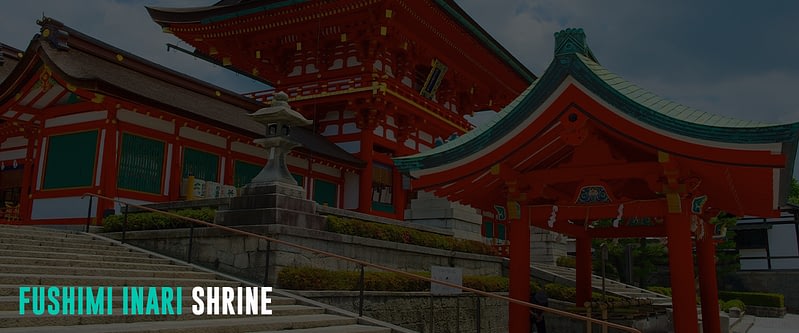
Fushimi Inari Shrine in southern Kyoto is famous for the thousands of vermilion torii gates that line the approach to Mt. Inari. Founded in 711, this Shinto shrine is dedicated to the deity of good harvest and successful business. The vibrant orange torii gates along the trail were donated by individuals and companies whose names and dates of the grant are inscribed on the back of each gate.
Hiroshima Peace Memorial, Park, & Museum

One of the most significant events in modern history is the devastating atomic bombing of Hiroshima and Nagasaki. After decades, Japan recovered, but the tragic history of that deadly day can make every visitor reflect on the past. The Hiroshima Peace Memorial Park, one of the city’s most prominent features, is a large park of trees, memorials, and pathways.
At the center of the park is a tree-lined Pond of Peace leading to the curved concrete cenotaph in which the known victims of the bombing were engraved. Also at the pond is the Flame of Peace, a sculpture of 2 hands cupping a flame and set to burn until all the nuclear weapons in the world are destroyed.
Across the river is the Atomic Bomb Dome, also known as the Hiroshima Peace Memorial, which is what remains of the former Prefectural Industrial Promotion Hall. It is one of the few buildings to remain standing today after the bombing. Now a UNESCO World Heritage Site, the Atomic Bomb Dome is a link to WW2 and Hiroshima’s unique past.
At the park’s southern end is the Peace Memorial Museum, the park’s main facility. It consists of two buildings and displays the remaining artifacts of the atomic bombing. In addition, galleries in the museum convey the dangers of nuclear weapons and the harsh reality of time.
Shirakawago

Shirakawago, a UNESCO Cultural Heritage Site, lies in a valley among the mountains of Gifu Prefecture. It is a unique village and outdoor museum of 110 gassho-zukuri farmhouses as old as 250 years, with many others in the surrounding area. The traditional village of Shirakawago makes a perfect postcard picture.
Gassho-zukuri means ‘constructed like hands in prayer’ because the steep and thatched roofs are said to resemble the praying hands of a Buddhist monk. The highly peaked tops, made without nails, help prevent snow buildup.
Himeji Castle

Himeji is the most magnificent castle in Japan and one of only a few original castles from 1580. Due to its elegantly white appearance, Himeji is also popularly known as the White Heron Castle. It is a national treasure and a UNESCO World Heritage Site.
The castle is in a strategic location surrounded by defensive walls. The first structures on the site were completed in the 1400s, while the castle complex was completed in 1609. The castle complex comprises over eighty buildings across multiple baileys connected by gates and winding paths.
Himeji Castle is also a trendy cherry blossom spot during the blooming season, usually between late March and early April.
Itsukushima Shrine

Miyajima Island is a short ferry ride from Hiroshima. The island is home to the Itsukushima Shrine, which is famous for its floating torii gate. It is a Shinto temple dedicated to the Princess daughters of the wind god Susanoo. The ancient temples, dating back to the 6th century, are linked together by pathways and walkways. The temple complex is stunning to look at during high tide, making the structures appear to float on the water.
Osaka Castle

Osaka Castle is one of Osaka’s most prominent landmarks, with a history dating back to 1583 during the Edo era. Surrounding the castle are citadels, gates, turrets, impressive stone walls, and moats. The present castle structure was a concrete reconstruction in 1931, with an observation deck on the 8th floor that gives a 360-degree view of Osaka. In addition, the nearby Osaka Castle Park is another popular destination, especially during the cherry blossom season.
Primary Spoken Language(s)
The Japanese language is the national and primary language of most people in Japan. English is also prevalent, as it has been used in business and mandatory at all school levels in Japan since 2020. But most of the older generation, and some taxi drivers, find it hard to speak English. Hence, it is best to enhance basic Japanese language skills or try free speech translation apps like VoiceTra.
In addition to Japanese, traditional languages are spoken in the Ryukyu Islands, such as Amami, Kunigami, Okinawan, Miyako, Yaeyama, and Yonaguni. The Ryukyuan language is part of the Japonic language family.
Safety Concerns

Japan is a very safe country to visit. It has a low crime rate and ranks 9th safest country in the 2023 Global Peace Index. In addition, the US Department of State also gives Japan a level 1 travel advisory as of January 8, 2024.
With its geographical location in the Pacific Ring of Fire and fault lines, Japan is home to over a hundred active volcanoes and is prone to earthquakes. Small earthquakes are a common occurrence almost daily but barely unnoticed. Hence, travelers should be familiar with earthquake preparedness. If you are inside a large building when an earthquake strikes, do not panic and stay calm. If you are by the coast, head to higher ground in case a tsunami happens. Above all, follow any instructions given by authorities. When an emergency occurs, dial 110 for the police, 119 for fire emergencies, and 199 for ambulance needs.
Budget Considerations
Most travelers think of Japan as an expensive destination. However, with careful planning, visitors can enjoy a budget trip to Japan while enjoying the country’s attractions, especially its irresistible cuisine and culture.
Accommodation

For a budget traveler, staying in hostel dorms, capsule hotels, and Airbnb apartments can save much of your travel costs. Relative to your destination and the trip season, a hostel dorm bed costs $18, while a budget hotel room costs $60. Similarly, staying in an Airbnb apartment costs around $60. For more comfort, travelers can stay in a three-star hotel for $70 and a five-star hotel for $180. To experience traditional Japanese accommodation, travelers can stay in ryokans starting at $65.
Food
Japan has exemplary cuisine, and your visit will never be complete if you don’t taste their famous ramen, takoyaki, sushi, and Kaiseki (traditional multi-course meal) experience. Expect to pay around $7 for a bowl of ramen, $4 for takoyaki, and $15 for sushi. Travelers can also grab meals from convenience stores or chains for around $4 if the budget is tight. In addition, anyone can feast on Kaiseki meals at approximately $70.
Meanwhile, travelers on a tight budget can go grocery shopping and cook their food. A weekly budget of around $80 can get you rice, pasta, some meat, and fresh produce.
Attractions and Transportation
Unless you go to famous theme parks, the cost of activities and entrance fees to attractions are relatively cheap in Japan. Entrance fees usually start at $2. In Japan, a traveler must try to experience the onsen (hot spring bath).
Transportation costs will consume most of a traveler’s budget when visiting Japan. Depending on the distance and the train type, a short-distance ticket costs around $1.50. Consider getting the Japan Rail (JR) Pass when taking a long-distance journey during your trip. A 7-day JR pass is around $319 (¥50,000), while a 14-day JR pass is $510 (¥80,000).
Average Two-Weeks Cost
Considering the cost of budget accommodation, a 14-day JR Pass, attractions, and not limiting your Japanese culinary experience, a traveler can fully enjoy the country at around $1300 for a solo traveler. The rate can still decrease if you travel in a group or if visitors stay in hotels instead of cheaper hostels.
Budget travelers in Japan spend around $70 daily and $980 for two weeks. This budget covers the costs of staying in hostel dorms or capsule hotels, taking public transportation, cooking their meals, and occasionally grabbing to-go meals. On this budget, travelers mainly do free activities or visit temples.
Meanwhile, travelers can comfortably stay in a 3-star hotel on a mid-range budget of $150 daily or $2100 in two weeks. The budget also includes dining out at local and mid-range restaurants, taking occasional taxis, and doing a few paid tours and activities.
Lastly, travelers can enjoy luxury in Japan for $350 daily to $4900 for two weeks. It includes staying in five-star hotels and resorts, dining anywhere, vehicle rental, and all the paid tours and activities they want. For them, the sky is the limit for travel.
Customs And Import Restrictions

Every tourist must declare their belongings when entering Japan. Hence, it is best to know Japan’s Customs rules.
Japan prohibits the entry of drugs, firearms, explosives, materials for chemical weapons, counterfeit money and banknotes, and pornographic materials. Furthermore, Japan restricts the entry of plants and animals, swine products, pharmaceutical products, hunting guns, air guns, and swords without permits. But like any other country, there are exemptions on bringing goods for personal use and professional equipment.
For the complete list of customs exemptions, restrictions, and prohibitions, visit the Japan Customs web page.
Climate Considerations

Japan has four distinct seasons, and these seasons have their charm. Spring from March to May is the time for the famous Cherry Blossoms in Japan. The blossoms bloom from south to north, with rainy seasons from late May to June that lead to summer. The summer in Japan, from June to August, is intensely hot and humid. From the northern to the southern part of Japan, the autumn colors light up the country from September to November. Finally, the winter season covers the land in powder snow from December to February.
Generally, the climate ranges from subarctic in the north to subtropical in the south, with conditions varying from the Pacific and the Sea of Japan sides. Northern Japan has warm summers and freezing winters, with heavy snow in the mountains in the Sea of Japan. The average winter temperature in Japan is 5.1 °C, and the average summer temperature is 25.2 °C. The highest temperature measured is 40.9 °C, and the lowest is -41.0 °C.
Primary Transportation Options
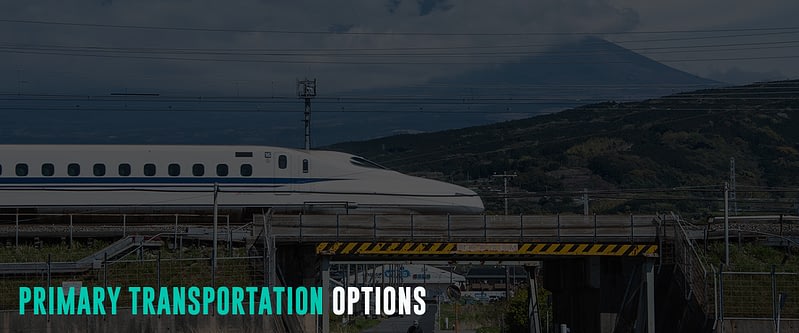
Japan has an efficient public transportation network characterized by punctuality, cleanliness, polite staff, and superb service. Its airports, railways and subways, buses, and taxis are all modern and highly developed.
Air
Japan has numerous airports serving both international and domestic flights. The most popular tourist entry points are Narita International Airport and Haneda International Airport in Tokyo, Kansai International Airport in Osaka, and Chubu International Airport in Nagoya. In addition, some regional airports, such as Fukuoka, Sendai, Hiroshima, and Shin-Chitose (near Sapporo), also serve international flights.
Almost every prefecture in Japan has an airport, and traveling by air is also one of the most convenient ways to explore Japan. In addition, because of the increased competition and presence of low-cost carriers, flying in Japan has become one of the cheapest forms of long-distance travel.
Railways
Trains are Japan’s primary means of passenger transport, connecting major cities and provinces at a reasonable cost. They are also the most convenient way for visitors to travel around Japan, especially using the Japan Rail (JR) Pass for long-distance travel. A 7-day JR pass costs around $319 (¥50,000), while a 14-day JR pass costs $510 (¥80,000).
About 70 percent of Japan’s railway network is operated by the Japan Railways (JR). Several other private railway companies run the remaining 30 percent, especially in and around metropolitan areas. Subways are also common in urban areas in Japan, with significant stations located inside malls and primary buildings.
Shinkansen, the high-speed bullet train, runs at a maximum speed of 320 km/h (200mph) and is ideal for long travel. For example, a bullet train from Tokyo to Osaka takes only two and a half hours for its 319-mile distance. Passengers can choose the ticket type: regular, first, and gran class. Aside from bullet trains, local and rapid trains also serve the metropolitan area and the far prefectures (provinces). Regular timetables are available, and all are famous for being punctual with their schedules.
Bus
Aside from trains, popular destinations in Japan can be reached by bus. Most cities have local bus networks that serve as the secondary means of transport in larger cities. In smaller towns and rural areas, buses are often the primary mode of public transportation. However, riding local buses can be intimidating for foreigners because of various payment and riding systems, including the lack of English timetables, signs, and announcements.
In addition, Japan has an extensive network of long-distance highway buses connecting different regions. Some highway buses travel overnight and are very economical. For budget travelers, the Japan Bus Pass is a good option. Most highway buses require advance seat reservations, but only a few bus companies provide an easy way for foreign tourists to make reservations.
Taxi
Taxis in Japan are highly trustworthy and will not try to take advantage of passengers. However, to the average and cost-conscious travelers, taxis are an expensive and unnecessary alternative to efficient public transportation. Additionally, they are the only option once the trains and buses stop operating at midnight.
A red plate on the taxi’s dashboard indicates it is vacant, while a green plate indicates the cab is occupied. A light on the taxi’s roof at night means it is empty.
Taxi fares vary according to the size of the vehicle, company, and region. When passing through expressways, toll fees are added to fares. Also, visitors must take note of the 20% surcharge for taxi rides from 10 pm to 5 am.
Aside from the expensive cost, another downside of riding taxis in Japan is the language barrier. Most taxi drivers in Japan are older and don’t speak English. Hence, having language translation apps helps.
Car Rental
Another option for getting around Japan is renting a car, which is ideal only for large groups going to destinations with infrequent transportation. Cars drive on the left, with the driver and steering wheel on the right side of the vehicle. Most roads are toll-free, except when passing through expressways, tunnels, and scenic routes.
Bicycle
Bicycle rentals are an excellent option for getting around in many tourist destinations. They are inexpensive and convenient for covering distances between attractions that are slightly too far to walk. Visitors can find bicycle rental shops at train stations, requiring a deposit and photo identification.
Boat
Japan is home to an extensive network of ferry routes and ships. Ferries can be an exciting and fast alternative to trains, buses, and planes between the main islands. Most ferries transport people, vehicles, and cargo. Shorter routes are served by small ships carrying a couple of cars and a few dozen passengers. On the other hand, longer routes are served by large ferries carrying hundreds of vehicles and passengers and are usually equipped with a range of amenities such as public baths and a restaurant.
Start Trip Planning

Travel-Wise is made from the ground up to help people travel more, break down the barriers that make it challenging to get going, and start your journey as painlessly as possible. Bookmark our other Country Guides to help kick-start your research for future travels. We also offer templated itineraries from our staff and community that help serve as a building block for your trip plans. Alternatively, we also utilize AI to provide a way to generate itinerary ideas. It saves much time just getting you up and running with a template. From there, you can use the trip planner to create your customized itinerary, invite friends and family for collaboration, find others from Travel-Wise to join the trip, book and track important information, journal, and share your experiences at the end or along the way!

